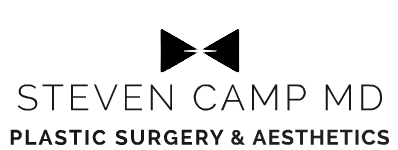Whether you’re looking to reduce wrinkles, sun damage, or acne scars, laser skin resurfacing provides remarkable results. The key is choosing the best laser technology to address your concerns and your preferred downtime. Our practice offers a range of Sciton laser skin resurfacing options and often recommends combining treatments for optimal results.
It’s essential, however, to have all the information you need to make an informed decision about your treatment. This blog post will address some of the most frequently asked questions about laser skin resurfacing. We also encourage you to browse our gallery of laser skin resurfacing before and after photos to see the versatility of the treatments.
Laser Skin Resurfacing Before and After Photos
Frequently Asked Questions
How long does it take to recover from laser skin resurfacing?
The recovery time after laser skin resurfacing can vary depending on the type of laser used, the depth of the treatment, and individual factors. Generally, there are two types of laser skin resurfacing: ablative and non-ablative. An ablative laser removes the outer layer of skin and requires 1 to 2 weeks of downtime. Non-ablative lasers stimulate collagen production without damaging the skin’s surface. Most patients experience redness and mild swelling for a few days to a week.
What’s the best skin resurfacing laser?
There isn’t a one-size-fits-all answer to this question because the “best” laser depends on your skin type, concerns, and goals. CO2 and erbium lasers are both ablative, but treatments using erbium lasers are less aggressive than those performed with CO2. Fractional lasers are popular because they create micro-injuries without damaging surrounding skin tissue and have a shorter recovery time than fully ablative lasers.
How much does laser skin resurfacing cost?
The cost of laser skin resurfacing can vary widely depending on several factors, including the type of laser used, the extent of the treatment, and the practice’s geographic location. On average, laser skin resurfacing can range from a few hundred to several thousand dollars per session. Ablative lasers tend to be more expensive than non-ablative lasers due to the complexity of the procedure. It’s important to note that less aggressive laser treatments usually require multiple sessions. A CO2 laser typically produces the desired result after one treatment.
What should I do to prepare for laser skin resurfacing?
Preparing for your laser skin resurfacing treatment involves carefully following the instructions we provide. They include diligently protecting your skin from the sun for a few weeks before the procedure, stopping certain medications (with your doctor’s approval), staying hydrated, and following a daily skincare routine.
What is hybrid laser skin resurfacing?
HALO® is the world’s first hybrid fractional laser skin resurfacing treatment. It’s an innovative approach that combines the benefits of both ablative and non-ablative lasers in a customized treatment. HALO provides more comprehensive results by targeting the outer layer of the skin and stimulating collagen production below the skin’s surface. It can be an excellent option for individuals with various skin concerns who want maximum improvement with minimal downtime.
Request a Consultation
The Texas sun can take a toll on our skin. Now is a great time to reverse sun damage and treat other complexion issues with laser skin resurfacing at our Fort Worth, TX, practice. If you’d like to speak with board-certified plastic surgeon Dr. Steven Camp and his friendly, knowledgeable staff about which treatment option is right for you, call our office at (817) 228-4315 or request a consultation using the online form.








Leave a Reply